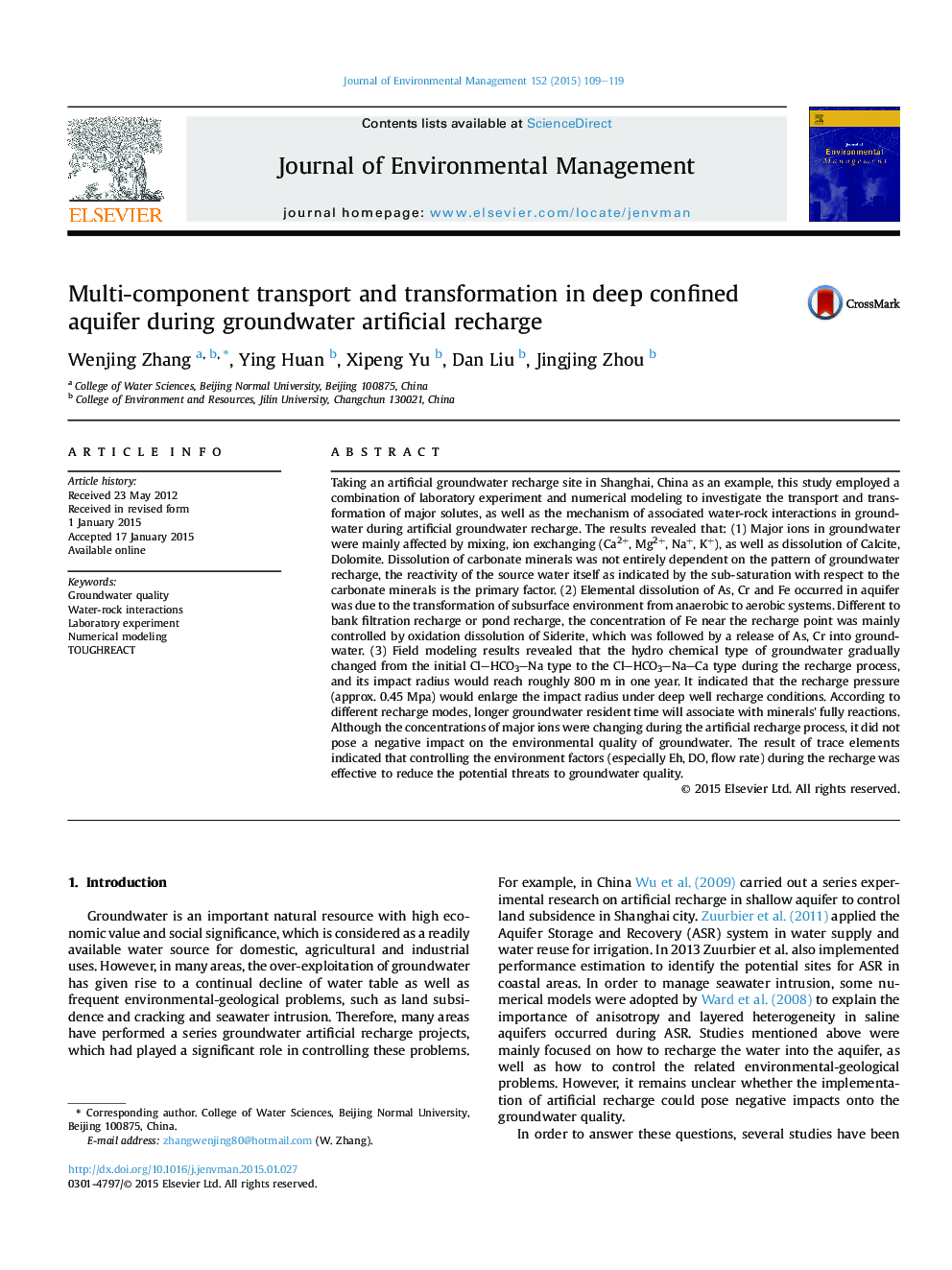| کد مقاله | کد نشریه | سال انتشار | مقاله انگلیسی | نسخه تمام متن |
|---|---|---|---|---|
| 7482513 | 1485260 | 2015 | 11 صفحه PDF | دانلود رایگان |
عنوان انگلیسی مقاله ISI
Multi-component transport and transformation in deep confined aquifer during groundwater artificial recharge
ترجمه فارسی عنوان
حمل و نقل و تحول چند جزء در آبخوان محدود عمیق در هنگام شستشوی مصنوعی آب زیرزمینی
دانلود مقاله + سفارش ترجمه
دانلود مقاله ISI انگلیسی
رایگان برای ایرانیان
کلمات کلیدی
کیفیت آب زیرزمینی، تعاملات آب و سنگ، آزمایش آزمایشگاهی، مدل سازی عددی، مشاعره
موضوعات مرتبط
مهندسی و علوم پایه
مهندسی انرژی
انرژی های تجدید پذیر، توسعه پایدار و محیط زیست
چکیده انگلیسی
Taking an artificial groundwater recharge site in Shanghai, China as an example, this study employed a combination of laboratory experiment and numerical modeling to investigate the transport and transformation of major solutes, as well as the mechanism of associated water-rock interactions in groundwater during artificial groundwater recharge. The results revealed that: (1) Major ions in groundwater were mainly affected by mixing, ion exchanging (Ca2+, Mg2+, Na+, K+), as well as dissolution of Calcite, Dolomite. Dissolution of carbonate minerals was not entirely dependent on the pattern of groundwater recharge, the reactivity of the source water itself as indicated by the sub-saturation with respect to the carbonate minerals is the primary factor. (2) Elemental dissolution of As, Cr and Fe occurred in aquifer was due to the transformation of subsurface environment from anaerobic to aerobic systems. Different to bank filtration recharge or pond recharge, the concentration of Fe near the recharge point was mainly controlled by oxidation dissolution of Siderite, which was followed by a release of As, Cr into groundwater. (3) Field modeling results revealed that the hydro chemical type of groundwater gradually changed from the initial Cl-HCO3-Na type to the Cl-HCO3-Na-Ca type during the recharge process, and its impact radius would reach roughly 800Â m in one year. It indicated that the recharge pressure (approx. 0.45Â Mpa) would enlarge the impact radius under deep well recharge conditions. According to different recharge modes, longer groundwater resident time will associate with minerals' fully reactions. Although the concentrations of major ions were changing during the artificial recharge process, it did not pose a negative impact on the environmental quality of groundwater. The result of trace elements indicated that controlling the environment factors (especially Eh, DO, flow rate) during the recharge was effective to reduce the potential threats to groundwater quality.
ناشر
Database: Elsevier - ScienceDirect (ساینس دایرکت)
Journal: Journal of Environmental Management - Volume 152, 1 April 2015, Pages 109-119
Journal: Journal of Environmental Management - Volume 152, 1 April 2015, Pages 109-119
نویسندگان
Wenjing Zhang, Ying Huan, Xipeng Yu, Dan Liu, Jingjing Zhou,
